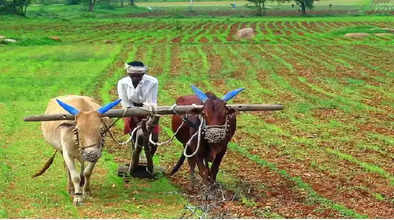10 things about the PM-KUSUM scheme and how it is empowering Indian farmers

The Pradhan Mantri Kisan Urja Suraksha and Utthan Mahabhiyan (PM-KUSUM) scheme was launched in March 2019 (last extended to September 2023) to provide affordable and accessible electricity to farmers across the country.
Here are 10 things about the PM-KUSUM scheme and how it is empowering Indian farmers
1. The main objectives of PM Kusum Yojana include making the agriculture sector diesel-free, providing energy and water security to farmers increasing their income, and reducing environmental pollution.
2. PM-KUSUM Yojana The scheme has the following components:
(i) Component ‘A’: Installation of 10,000 MW of decentralized ground/stilt mounted grid-connected solar or other renewable energy-based power plants by farmers on their lands.
(ii) Component ‘B’: Installation of 14 lakh standalone off-grid solar water pumps; And
(iii) Component ‘C’: Solarization of 35 lakh existing grid-connected agricultural pumps through feeder-level solarization (FLS).
3. Beneficiaries under Component-B and Component-C can be individual farmers, water user associations, primary agricultural credit societies, and community/cluster-based irrigation systems.
4. Financial assistance is available under the PM-KUSUM Yojana scheme
5. Purchase Incentive (PBI) to DISCOMs at the rate of 40 paise/kWh or Rs 6.60 lakh/MW/year, whichever is lower, for purchasing solar/other renewable energy under this scheme.
6. PBI is given to the Discom for a period of five years from the date of commercial operation of the plant. Therefore, the total PBI payable to DISCOMs is Rs. 33 lakh per MW.
7. For individual pump solarization under Component-B and Component-C: CFA is provided at 30% of the benchmark cost released by MNRE or the system prices discovered in the tender, whichever is lower. However, in North Eastern States including Sikkim, Jammu & Kashmir, Ladakh, Himachal Pradesh and Uttarakhand, Lakshadweep and A&N Islands, 50% of the benchmark cost issued by MNRI or the prices of the systems discovered in the CAFA, whichever is lower. , is available.
8. The concerned State/Union Territory will have to provide at least 30% financial assistance. The remaining cost is to be contributed by the beneficiary. Component B and Component C (IPS) of PM Kusum Yojana can be implemented even without 30% state share. Central financial assistance will remain 30% and the remaining 70% will be borne by the farmer.
9. CFA of Rs 1.05 crore per MW is provided for agricultural feeder solarization. There is no mandatory requirement of financial assistance from the participating State/UT. Feeder solarization can be implemented in CAPEX or RESCO mode.
10. By February 8, 2024, more than 2.95 lakh standalone off-grid solar water pumps were installed under the PM-KUSUM scheme, the Union Minister for Power and New and Renewable Energy said in a written reply to a question in the Lok Sabha.

